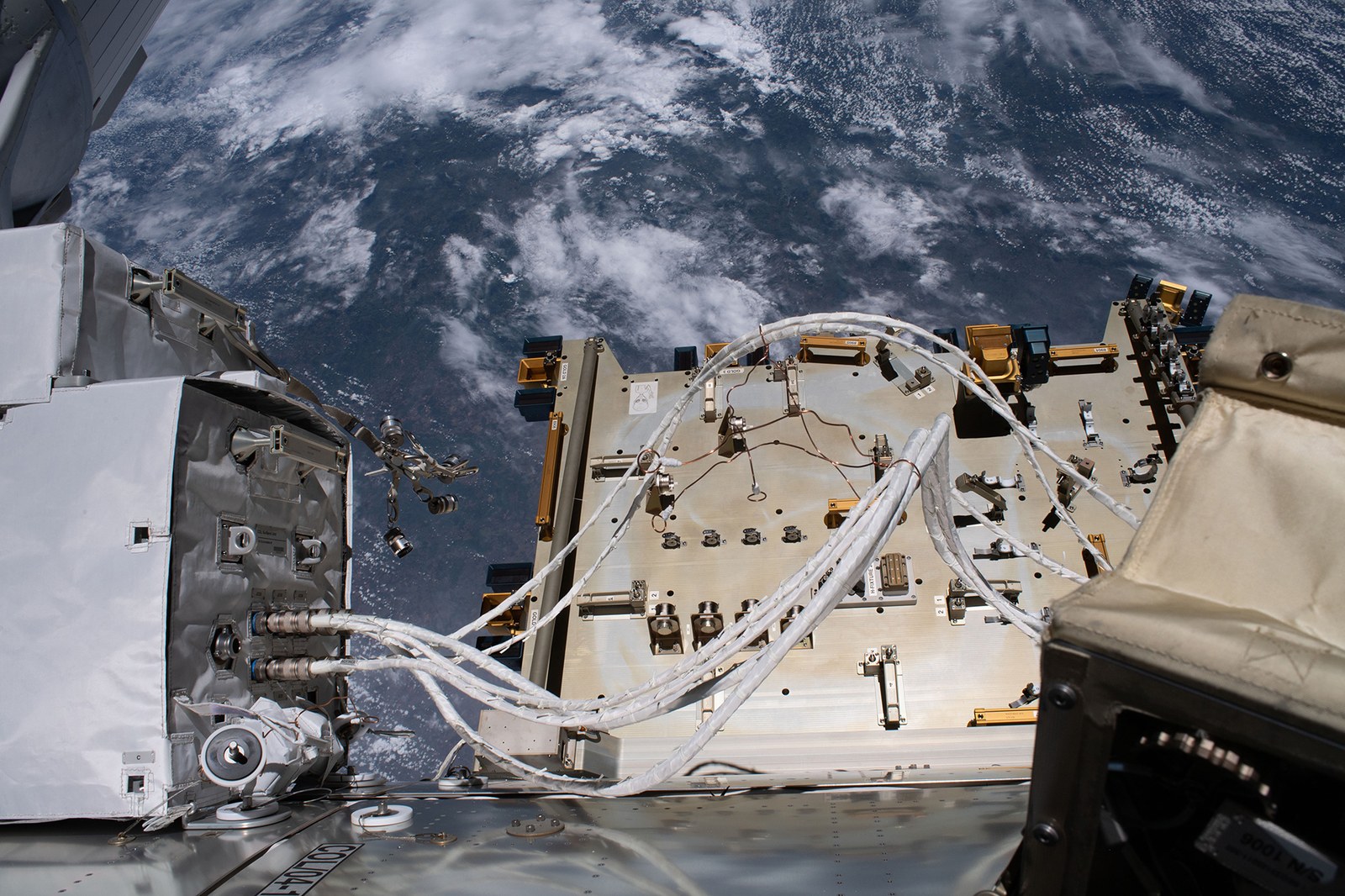Access to the 'SpaceDataHighway'



- With the commissioning of the 'Columbus Ka-band Terminal', the International Space Station (ISS) will be connected to the Airbus 'SpaceDataHighway'.
- The antenna has been supported by the German Space Agency at DLR with funding from the German Federal Ministry for Economic Affairs and Climate Action.
- ColKa was tested and is operated by the Columbus Control Centre at DLR's site in Oberpfaffenhofen.
- Focus: Spaceflight, Cosmic Kiss, satellite communications
The 'Columbus Ka-Band Terminal' (ColKa) has commenced service. "The volume of scientific data generated by the experiments on the International Space Station (ISS) is continuously increasing. ColKa gives the Columbus laboratory on the ISS its own direct access to the SpaceDataHighway. The high-speed satellite link will significantly accelerate 'data traffic' to Europe. Many scientists will benefit from this with their experiments – during Matthias Maurer's 'Cosmic Kiss' mission and Italian astronaut Samantha Cristoforetti's mission, following immediately after," explains Volker Schmid, 'Cosmic Kiss' Mission Manager for the German Space Agency at DLR. This antenna, which is about the size of a refrigerator, now makes real-time data transfer possible between the ISS and the Columbus Control Centre (Col-CC) at the DLR site in Oberpfaffenhofen, from where the ColKa terminal is operated. The antenna and the SpaceDataHighway are an Airbus project being conducted in cooperation with the European Space Agency (ESA).
Tests for a flawless operation
On 27 January 2021, NASA astronauts Mike Hopkins and Victor Glover installed the antenna on the exterior of the ISS European Columbus module during an extravehicular activity (EVA). During this activity, the two astronauts were supported from the ground by the Columbus Control Centre and ESA Danish astronaut Andreas Mogensen. "Following the successful installation, we carried out numerous tests from the Columbus Control Centre. We checked, for example, whether the antenna aligned correctly according to our commands, whether communication with the data network was working properly and whether data was being transmitted successfully," explains Daria Margiotta, a Flight Director at the Columbus Control Centre.
Temperature tests were also carried out. The antenna must also function under the harsh conditions of space. If the ISS is turned towards the Sun, the outer layer is exposed to temperatures of up to 121 degrees Celsius. If it moves into Earth's shadow, the temperature suddenly drops to minus 157 degrees Celsius. To function optimally under these conditions, the antenna is automatically cooled and heated as needed. In addition, all system and software tests were carried out in Oberpfaffenhofen. After completing these tests, ColKa is now ready for continuous operation.
A 'highway in space' for fast data traffic
How does the data transfer work? At 36,000 kilometres above Earth, geostationary communications satellites always remain above a given point because they orbit at the same rotational speed as Earth. These relay satellites are in the 'field of vision' of other satellites flying at low altitudes, such as the fleet of Earth observation satellites operated by the European Copernicus programme, for a long time. This enables them to receive large amounts of data from the 'low-flyers' and transmit them to ground stations particularly quickly and, above all, without any interruption.
"ColKa transmits its data to the EDRS-A communications satellite, which then transmits it to the ground station at Harwell in the UK. From there, the data travels via the Interconnection Ground Subnetwork (IGS) to the Columbus Control Centre in Oberpfaffenhofen and vice versa. In this way, we achieve data transmission rates of 50 megabits per second," explains Margiotta. For the Columbus Control Centre, this provides entirely new possibilities for experiments, as well as flight dynamics, ground software and in regard to the general operation of the Space Station.
Scientists benefit
Many scientists will benefit from the link to the data highway, as this will provide them with a more direct access to their experiments. "ColKa will allow us to receive data from all European racks and payloads much faster than ever before. In the Columbus Control Centre, we therefore keep a very close eye on flawless data traffic, which we coordinate with the other users in Europe. But we are also in permanent contact with NASA because, for example, the antenna cannot be operated during astronauts' extravehicular activities," explains Margiotta. ColKa will also be used on special occasions for space-to-ground communications. In this way, for example, audio and video conferences for public events will become possible via ESA's 'Astro Pi' hardware. "ColKa expands the communications possibilities with the Space Station immensely.
But not only that; the expertise gained during the design, construction and operation of the antenna will contribute to the development of the telecommunications and refuelling module on the European ESPRIT module of the 'Lunar Gateway' – the planned outpost in lunar orbit. Communications there must function over a distance 1000 times greater than to the ISS," explains Volker Schmid.
